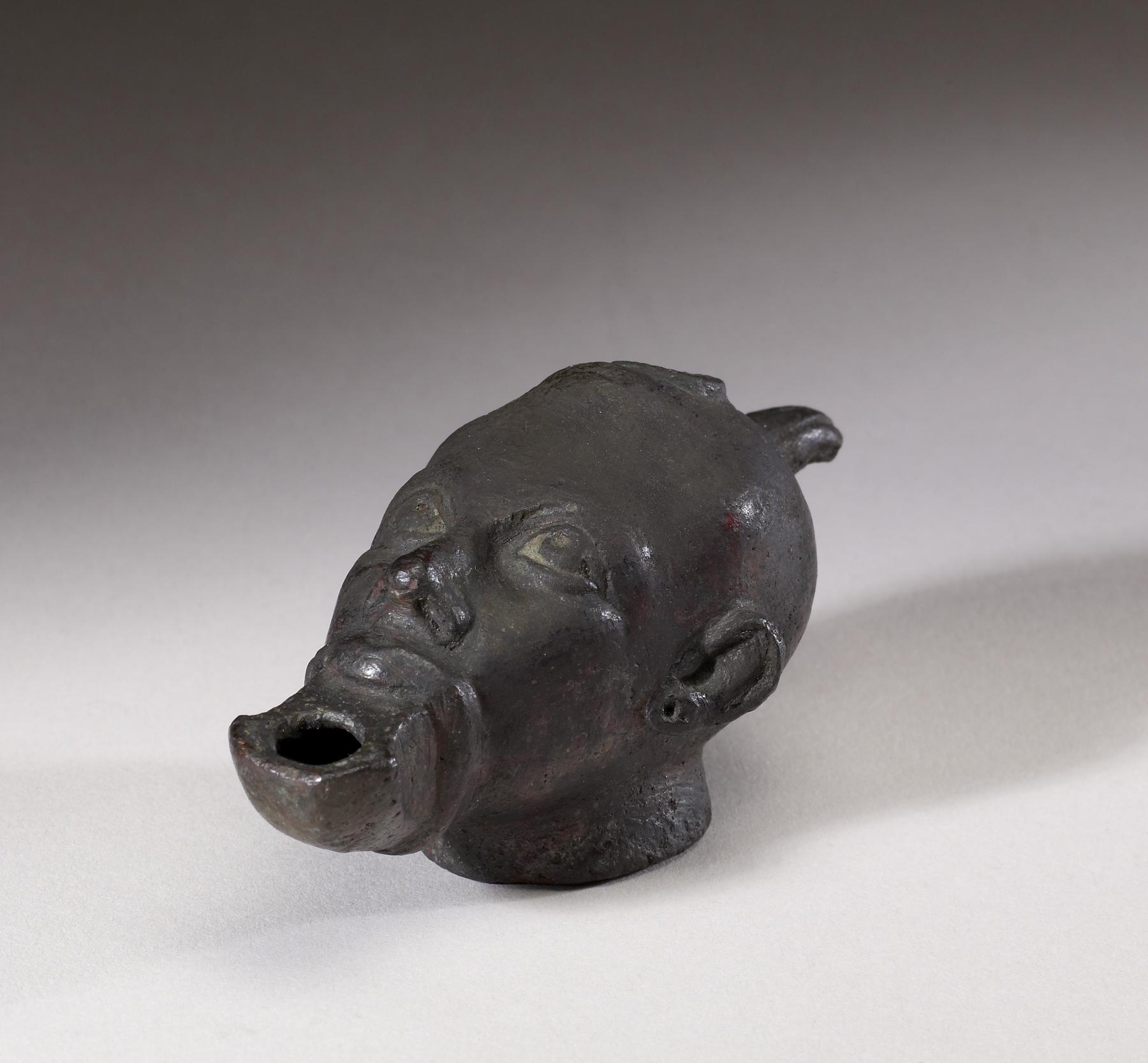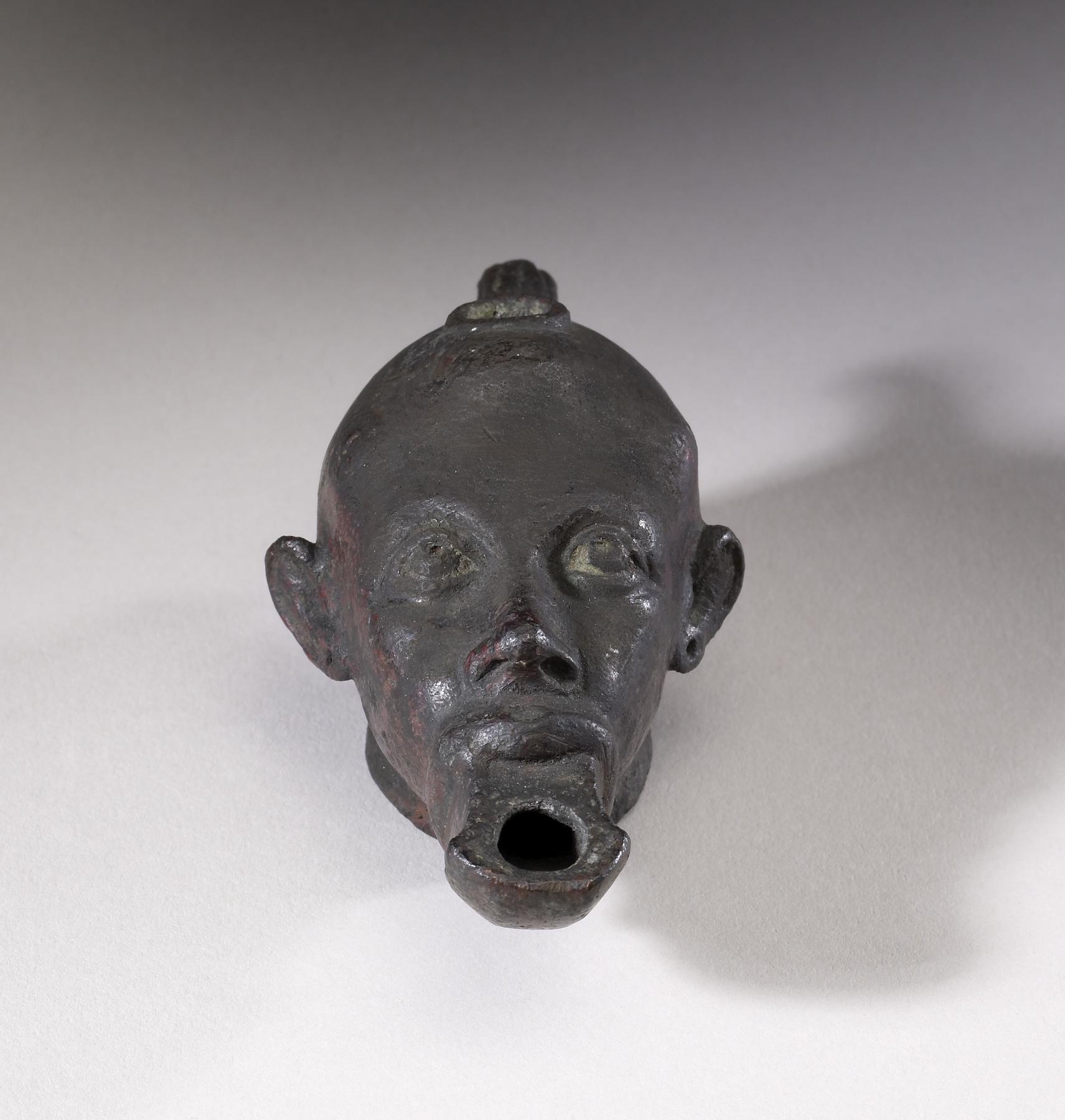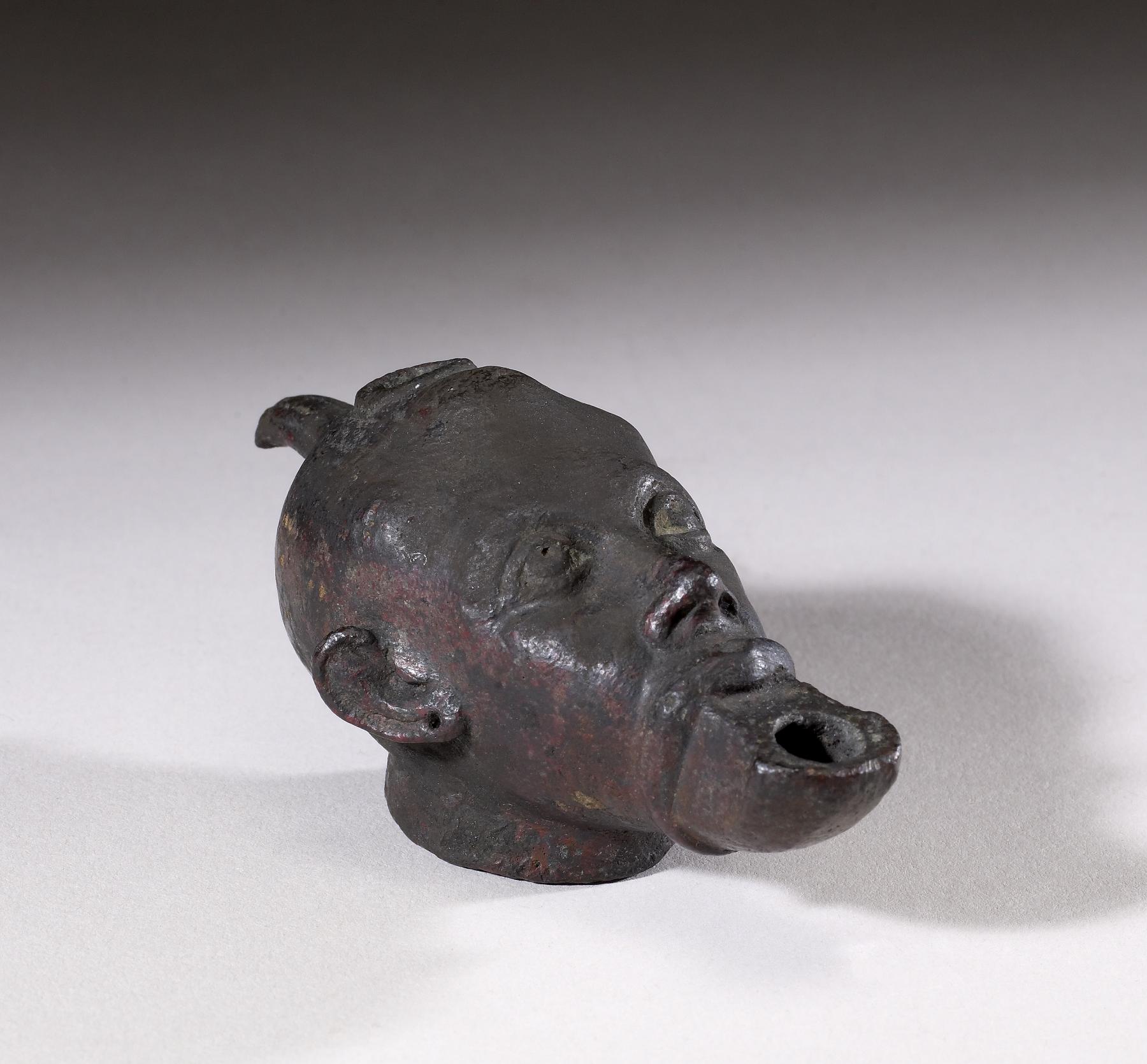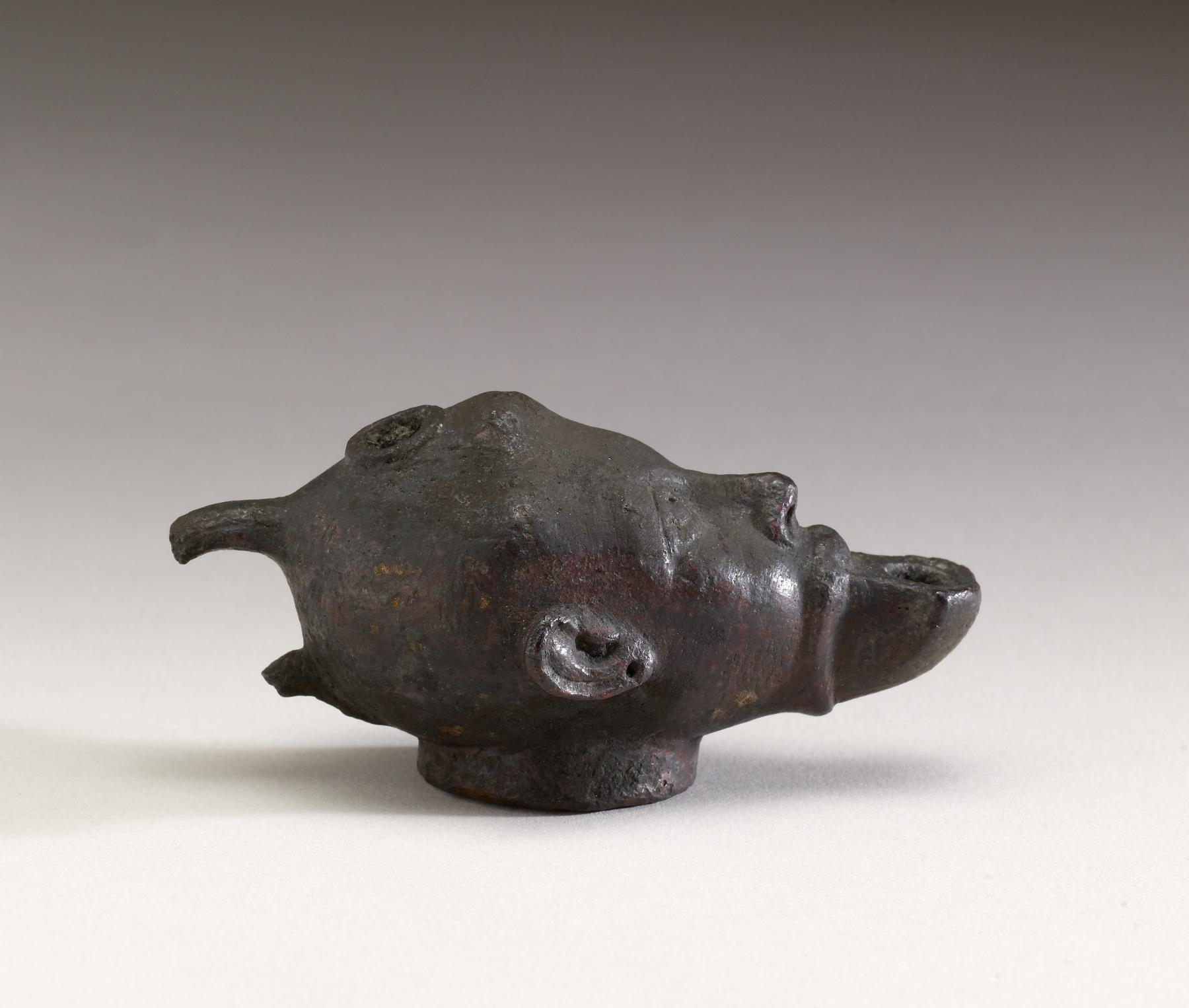Oil Lamp in the Shape of a Head
(Renaissance Europe )
Oil lamps in the shape of the head of an animal or person were created in Italy during the 1500s in imitation of similar ones made by the ancient Romans. Collectors during the 17th century could not tell the difference and collected the Renaissance examples as “antiquities.” This oil lamp would have been appreciated by a European collector not only for its “antiquity” but also for its perceived exoticism (association with intriguing distant cultures). The representation, most likely of an African person, is undignified—the wick would have stuck out of the man’s mouth. This object thus reflects the racism historically common to white Europeans of the period.
Provenance
Provenance (from the French provenir, 'to come from/forth') is the chronology of the ownership, custody, or location of a historical object. Learn more about provenance at the Walters.
Henry Walters, Baltimore, before 1931; Walters Art Museum, 1931, by bequest.
Exhibitions
| 2012-2013 | Revealing the African Presence in Renaissance Europe. The Walters Art Museum, Baltimore; Princeton University Art Museum, Princeton. |
Conservation
| Date | Description | Narrative |
|---|---|---|
| 9/12/2012 | Treatment | Leaned;coated |
Geographies
Italy (Place of Origin)
Measurements
H: 1 9/16 x W: 3 1/16 x D: 1 9/16 in. (4 x 7.8 x 4 cm)
Credit Line
Acquired by Henry Walters
Location in Museum
Accession Number
In libraries, galleries, museums, and archives, an accession number is a unique identifier assigned to each object in the collection.
In libraries, galleries, museums, and archives, an accession number is a unique identifier assigned to each object in the collection.
54.1716










